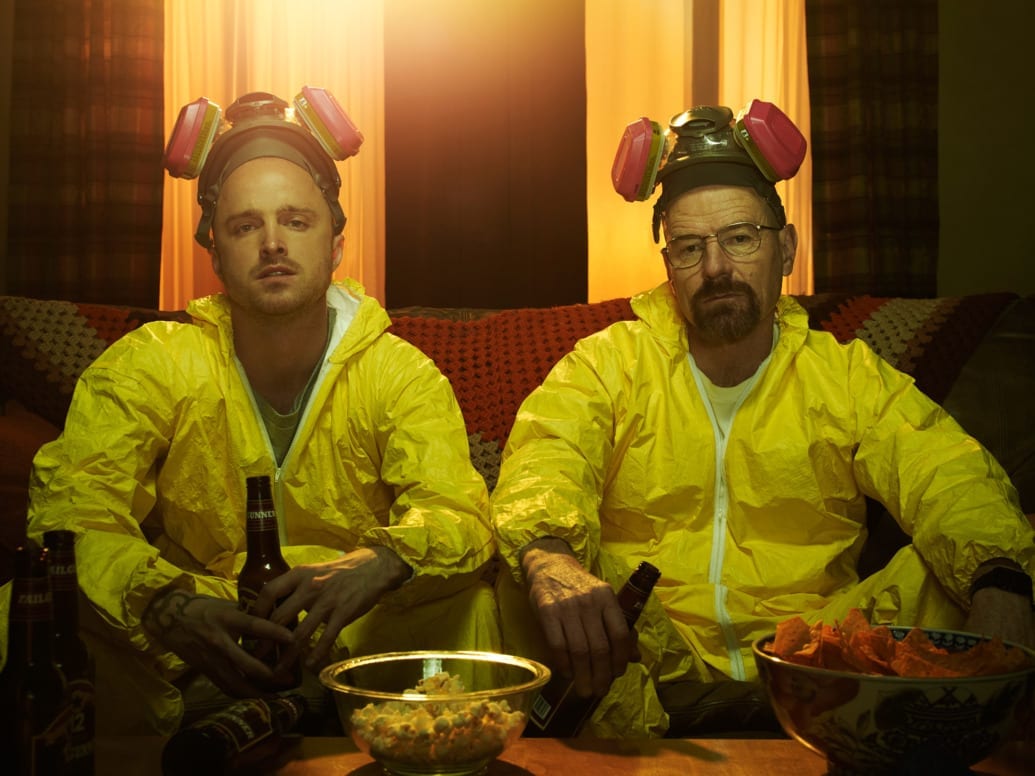September 29th 2013 saw the end to one of the most critically acclaimed shows to ever be put on television. It’s been a year since we said goodbye to Breaking Bad, yet it shows no signs of wavering in popularity – Aaron Paul still talks of daily encounters from fans begging him to call them “bitch”. Though its following was far smaller during the first couple of seasons, that number grew significantly through word-of-mouth and the countless awards it gained over the years. With unforgettable characters, breathtaking cinematography, and an episode under its belt that some claim to be the best in all of television, it’s no wonder why Breaking Bad is as successful as it is.
One of the most captivating things about the show was its constant drive to push the boundaries of viewers’ expectations. When the very first scene of a show features a middle-aged man wearing nothing but underwear and a gas mask driving an RV in the desert with two bodies sliding about in the back, followed by said man filming a goodbye message to his family, then awaiting the approach of oncoming police with a gun in his hand, you’d think the audience would be able to guess what kind of a ride they were in for. Compared to the rest of the series however, the pilot is pretty tame, though the premise should have been enough to indicate the horror that would unfold subsequent to the first episode: “When a high school chemistry teacher is diagnosed with inoperable lung cancer, he turns to a life of crime to provide for his family’s future, teaming with a former student to produce and sell crystal meth.” Sounds like a barrel of laughs.
Yet that was part of the genius of Breaking Bad. Somehow amidst all the violence and bleak drama, the show was able to be just as funny as it was shocking. The characters of Hank, Walt’s brother-in-law, and Saul, his sleazy lawyer, provided much needed comic relief throughout the series’ run. Most of the humour, however, was down to the interactions between Walt and Jesse, whom creator Vince Gilligan once referred to as “the Odd Couple of the 21st Century”; one of the best scenes is when they are in teacher-student mode, with Walt asking Jesse what element they will need to help start the RV. Jesse, misunderstanding Walt’s hinting glance at the wire in his hand, replies with a smile, “Ah…wire.” The look on Bryan Cranston’s face is priceless.
That’s another extraordinary aspect of the show: the acting. Bryan Cranston took the role of Walter White and completely made it his own; it’s impossible to imagine another actor transitioning from mild-mannered school teacher to ruthless drug lord as believably as he did. Aaron Paul’s portrayal of drug dealer Jesse Pinkman was both endearing and heartbreaking, while Anna Gunn’s performance as Walt’s tough wife Skyler was nothing short of revolutionary.
Breaking Bad was like nothing people had ever seen on television before. For almost six years audiences sat watching in horror as their likeable, quiet protagonist evolved into a detestable antagonist whom no one could reasonably root for, while constantly challenging those who did. It showed that television could have just as much artistic merit as cinema, using techniques like foreshadowing and placing meaning in its cinematography. The finale was arguably one of the most talked about in TV history, and deservedly so. Breaking Bad was a masterpiece from start to finish, reaching an iconic status in the world of television that guarantees it will still be talked about for years to come.
Words by Samantha King
